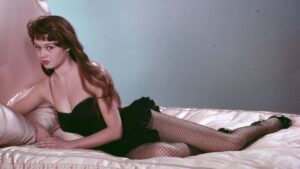The Secret Broker: ‘I can tell how much you are suffering by your long faeces…’

Picture: Getty Images
After 35 years of stockbroking for some of the biggest houses and investors in Australia and the UK, the Secret Broker is regaling Stockhead readers with his colourful war stories — from the trading floor to the dealer’s desk.
Some time ago, the Financial Times did an exposė piece on a hedge fund, that ended up in the demise of the hedge fund, which once had €30bn under management and would generate fees of €500m a year for the manager.
Part of the hedge fund’s problem was that they offered retail punters (like you and me) the opportunity to invest in the funds that they were running, which meant they were regulated by the European financial police department.
So you had wealthy individuals and little old ladies with a vested interest in these funds, which were promoted as being very liquid and very transparent.
The marketing team came up with the name that reflected these values and which was easy for everyone to relate to.
The name they came up with was H2O, as in water.
Highly liquid and transparent. I’ll drink to that.
Bonds and currency was meant to be their forte – hence the liquidity – and being totally compliant and open was their transparency.
‘So what could possibly go wrong?’, you might ask yourself.
Well, as it turns out, the managers in charge managed to get themselves seduced into putting some of the funds under management into some highly illiquid and unlisted bonds and this is what the FT investigation wrote about.
Within a week of their article being published, redemptions came in at €8bn in just that one week alone.
Stuck on you
As we all know, when you have a mass of redemptions, the highly liquid ones are sold off first. That leaves the ones hanging in there with an ever decreasing pool of liquidity and an ever increasing pool of, well, rubbish that can only be liquidated by appointment.
The plug had been well and truly pulled out by the FT article and as the water started to drain out of the pool, a murky brown residue was starting to be exposed.
The characters involved in H2O came in as though they were from a Jason Bourne thriller, with one of them having been made bankrupt twice and another one seduced by the wonder of rubbing shoulders with the likes of Lionel Richie, who was the singer at one of the characters’ weddings.
We have seen all of this before and it was only when the FT did an excellent job of going deeply under the covers that the facade started to crumble.
There were a couple of excellent takeaways (well for me anyway) that came out of this whole saga.
One was a quote that one of the managers came up with, when trying to convince the judge who was about to sentence him for his crimes (and why he did them). His quote was: “To be rational in an irrational market is not rational and that is why I did what I did.”
To me, this quote is up there with Donald H. Rumsfeld’s “We also know there are known unknowns — that is to say, we know there are some things we do not know. But there are also unknown unknowns, the ones we don’t know we don’t know.”
The other takeaway was that when one of them was under severe pressure because one of their liquid currency positions had gone against him, his nose would start to bleed.
This to me was the most interesting bit of the whole saga.
Can you imagine, that the pressure on your brain is mentally so much, that it causes your nose to bleed? Imagine him trying to play poker and bluff his hand to everyone!
One drop and you’d be all-in.
Bearing up well?
Human traits would be one of the things we would always be on the lookout for.
When companies would come in for presentations, we would always have someone taking notes. Not on what was being presented but on the actual person themself, as the notetaker would be a professional on human traits.
That way, we would know what to ask at follow up meetings, as we knew where all the lies were.
When Nick Leeson was blowing up Barings Bank, he would appear on the floor and bid markets up, in the manner of a confident, ‘I know what I am doing’ trader.
Then he would go and be physically sick in the men’s toilets.
His nose didn’t bleed but his actions made him physically throw up and as one of his rival firms had two people watching his every movement, they could observe the truth.
He was long and wrong.
When we were trading futures on the FTSE 100, you could always find traders in the nearby bars at lunchtime, standing in their leery jackets and knocking back the hard stuff.
One very dominant FTSE 100 trader suffered from eczema on the inside of his hands.
All it took was a shake of his hand and we knew instantly if he was making money or losing money on his positions. If he was under pressure, then you could feel it in the roughness of his hands.
On the floor he would have the perfect poker face when trading away but to be able to hold his bluff he would rub his hands and inflame his eczema.
The worse his position, the more he rubbed his hands.
We could mentally calculate his margin and we could calculate how far he could go before he would run out of margin and have to cut.
When he did, we would be ready.
Everything has changed now but when you had the open cry (lots of shouting and hand signals) trading pits, orders would be phoned down and converted to hand signals for the trader to see and act upon.
If you stood at the right spot, you could see the same hand signals and relay them directly onto your own trader and front run them.
Not illegal but just savvy.
At weekends, we would do the same at the race tracks. We would watch the big punters approach a bookmaker, whisper in his ear and then watch what odds would be marked in.
You would then signal to your mate at the other end of the track what odds had just come in and his job was to get us all set before all the bookmakers adjusted their odds in.
Not illegal but just savvy, Guv.
Of course all of this was pre mobiles, so we could arbitrage certain situations but when mobiles and screen trading came in, we lost that edge.
Size doesn’t matter
Well, when I said we lost that edge, we didn’t really.
When the trading floors in Australia all closed down and became screen based, we realised that every broker then had the exact same playing field.
He who pressed the button first got the trade, no matter if it was a massive broker with 100s of traders or just a small broker with two operators.
Same screens, same opportunity. Size (for once) didn’t matter.
So, the trick this time was to use smaller brokers when you had big buy and sell orders, as this allowed you to bluff the market.
If a small broker had a massive buy or sell order, all the big brokers could be wrong-footed, as a small retail broker would never have orders over A$100,000, right?
Wrong.
We once had a massive buy order in a medium sized stock and the small broker that we used was able to bluff his way to such an extent that the big brokers became embarrassed with their selling.
They would kindly phone up one of the two operators and politely point out that they must have made a mistake and added a couple of noughts on their little retail orders and would they like to strike a few lines of stock out.
Er, no, would be the reply.
The next phone call would be someone shouting down the line that they want all trades cancelled because they had been made to look like a fool in front of their seller.
Basically, we would make the small broker make bids on the screen of just over A$100,000 worth of stock and by doing this, everyone just saw a ‘U’ on the bid. The ‘U’ stood for undisclosed, so no one could see how much you had to buy above A$100,000 worth.
As soon as someone hit the bid, the ‘U’ would remain in the queue until it went under A$100,000 and then it would automatically disclose the balance left to buy.
For example, if a broker was showing a ‘U’ order for 150,000 shares at A$1.00 each, all the other side would know is that they had a minimum of A$100,000 worth of shares to buy.
If in the above sample, someone hit the ‘U’ bid with 52,000 shares at A$1.00 each, the computer would automatically show that the balance of the order was now 98,000 shares (i.e. under A$100,000 worth) and the ‘U’ would automatically disappear.
If you did have a ‘U’ order in the screen, you could always adjust it down in size – but never up in size.
This meant no one could hog a position in the queue.
Now imagine this
You have 5m shares to buy and you don’t want to signal this to the market (and you know there is a seller around) and they are trading around A$1.00 a share.
You send ‘little broker’ in to buy A$102,000 worth undisclosed, so it appears on everyone’s screen as a ‘U’.
Big broker goes, ‘yeah right’ and hits the bid with A$100,000 worth of shares and the balance of your order now shows that little broker now has just 2,000 shares left to buy at A$1.00.
Bang! He gets filled in and the market is now showing 98c to A$1.00 – and the bigger broker is back openly offering another 100,000 at A$1.00.
As more and more traders see big broker has already sold 100,000 shares and he has another 100,000 to go, everyone starts to join the seller at A$1.00.
After waiting for about half an hour, you send little broker back in with a ‘U’ order with just enough to take out all of the sellers at A$1.00 and leave an odd amount on the bid, like 5,078.
Something that looks like you have come to the end of your order and you just have scraps left.
Bang! They fill you in and the market is now back to 98c to A$1.00.
You now wait for lunchtime and all goes quiet as the big brokers go out to lunch, laughing about little brokers’ attempt at ‘trying to look big’.
Around about 1.30pm, you send little broker in again but this time you give him 500,000 to buy undisclosed at A$1.00.
Big broker, now with a few wines under his belt and still at lunch, tells his trader to sell A$102,000 worth of shares, so he can then see the balance.
But this time it now shows a ‘U’ still, so he has another go. The buy still shows as a ‘U’.
After he has hit you with 300,000 and you are still undisclosed, you tighten up the screws and what balance you have left, you tell little broker to up it to A$1.01.
The market is now A$1.01 to A$1.03.
You can feel the anger at the other end of the button, as they fill you in again at A$1.01 and you just sit back and wait.
All-in
As the big broker thinks he has won, you just do nothing till about 3.00pm, where there is an hour of trading left to go.
You instruct little broker to go in with 495,022 to buy at A$1.00 but not undisclosed. This way again it looks like you are coming to the end of your order and after 5 mins, whatever is left go up to A$1.01.
Whilst little broker is hoovering what is left at A$1.01 and there is 20 mins of trading left, you tell little broker to now put in 1m to buy at A$1.01 undisclosed and then go to A$1.02 undisclosed.
So, the stock is now A$1.02 to A$1.03 and it’s showing an undisclosed amount on the buy from the little old broker.
By the end of the day, we would have bought most of our shares at an average of around A$1.01 a share and big broker would have sold all of his for the same.
We would then go undisclosed 2 minutes before the close at A$1.03, making the market finish the day at A$1.03 to A$1.04.
Our buyer would be happy and their seller would not, as the big broker would have trouble trying to explain why he sold so many at the lower prices.
Not illegal, just savvy!
Unfortunately the ‘U’ buying order is no longer used and which broker is which no longer applies, as now anyone can trade from their phone and see what everyone else sees.
Now you can’t anymore feel the roughness of a hand, see a bleeding nose or witness someone bluff hurting so bad, that they are physically being sick on the trading floor.
If you miss or would like to experience what those days were like, I suggest that you take your mobile phone down to your local pub at about midnight on a Saturday and open your Bitcoin trading app and start trading away.
If you see any blood or chundering just go harder on the buying!
Never fails. Trust me.
Now, where’s my hankie?
The Secret Broker can be found on Twitter here @SecretBrokerAU or on email at [email protected].
Feel free to contact him with your best stock tips and ideas.
UNLOCK INSIGHTS
Discover the untold stories of emerging ASX stocks.
Daily news and expert analysis, it's free to subscribe.
By proceeding, you confirm you understand that we handle personal information in accordance with our Privacy Policy.








